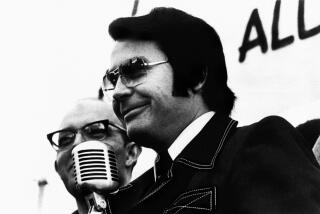Psychologists Debate the Power of Subliminal Messages
RENO — Even if the attorneys for the parents of the two dead youths can prove that subliminal messages exist on Judas Priest’s “Stained Class” album, Washoe District Judge Jerry Carr Whitehead must still decide whether those messages were a legal cause of the shootings.
Whitehead, who is hearing the case without a jury, ruled in August that the music and the words on the album are protected from liability by the First Amendment. But he also ruled that subliminal messages, if they exist in this case, can be a target for damages.
Subliminal messages are visual images or auditory phrases designed to bypass the rational mind and speak directly to the subconscious.
But do they actually work? The answer depends on who you ask.
Dr. Bruce Tanenbaum, a local psychologist who treated James Vance’s in the three years between the youth’s suicide attempt and his eventual death of complications related to the shooting, testified last week that he believed that nothing, outside the subliminal messages in the music, could have driven the youth to want to take his own life.
Psychologist Howard Shevrin of the University of Michigan, who gave a deposition in the Reno case, also said that subliminal messages contain the power to push an unstable individual over the edge.
“If the ‘do it’ command is proven to exist,” Shevrin said in a telephone interview from his Ann Arbor office. “I believe that the subliminal message could have tilted the balance and caused them to act.”
But psychologist Tim Moore at Glendon College, York University, who is scheduled to testify for Judas Priest at the trial, said that subliminal messages cannot induce or alter behavior.
“There is no empirical scientific evidence to support the claim that subliminal messages are effective in any way,” Moore told The Times in a telephone interview from Toronto. “It’s pure gobblygook.”
Gobblygook or not, the subliminal message market is big business. Self-help subliminal tapes that claim to stop everything from overeating to balding are being hawked by the millions--at least 2.5 million tapes were sold in 1989 alone, according to industry estimates.
Subliminal advertising is outlawed by the Federal Communications Commission. Plus, all three major television networks have policies banning its use.
The power of subliminal messages first came to the public’s attention in 1956 when a marketing research firm reportedly flashed Eat Popcorn and Drink Coke on a movie screen during the presentation of a film at a New Jersey drive-in. The agency claimed the advertisement caused an increase in soft-drink and popcorn sales.
But when the firm tried to duplicate the experiment, no increase in sales took place.
More to Read
Sign up for Essential California
The most important California stories and recommendations in your inbox every morning.
You may occasionally receive promotional content from the Los Angeles Times.










